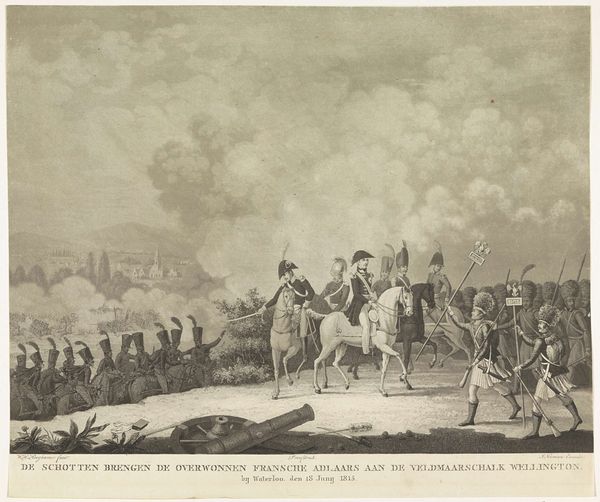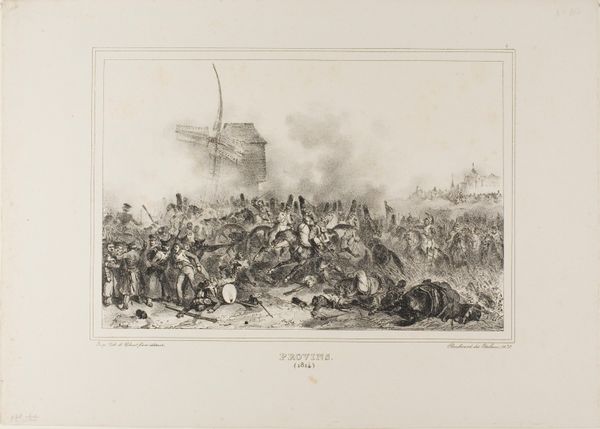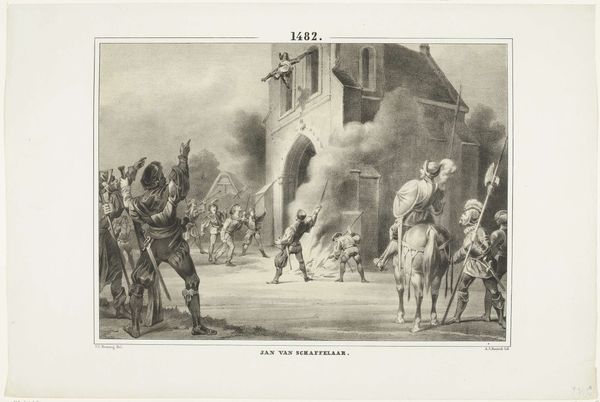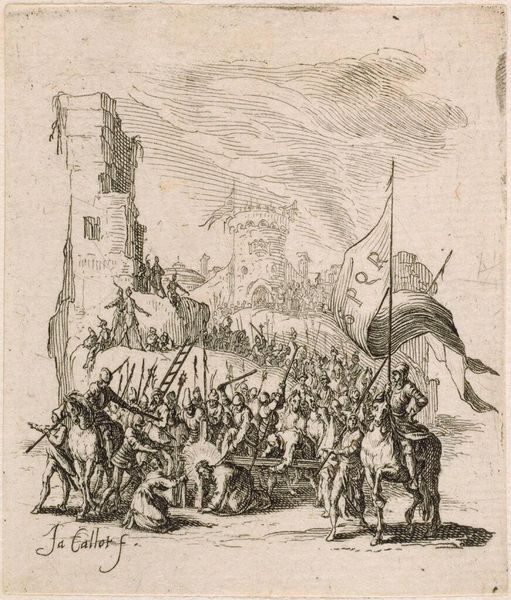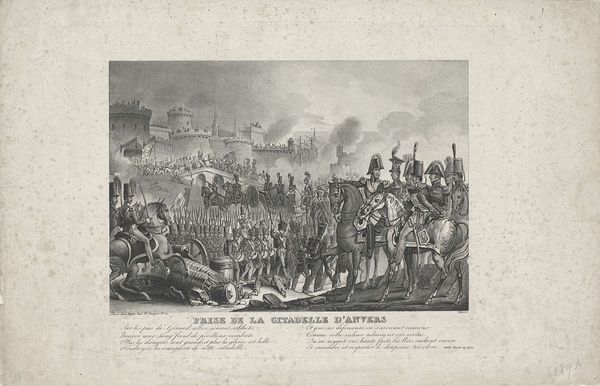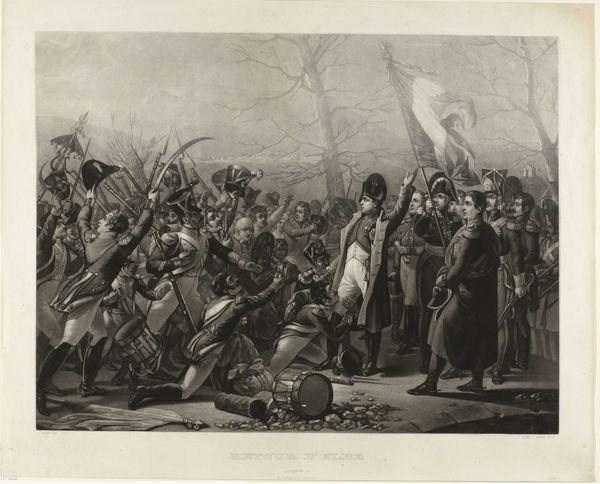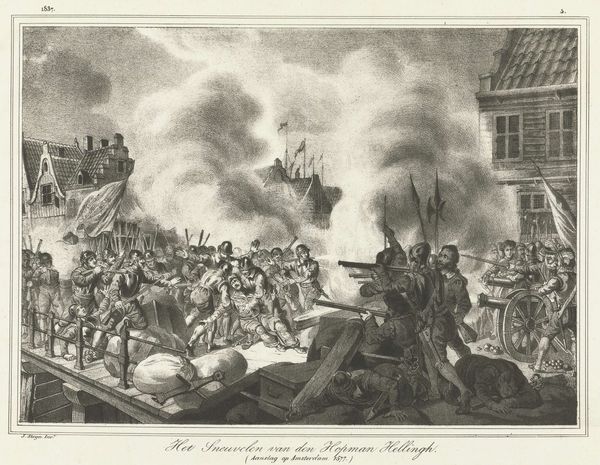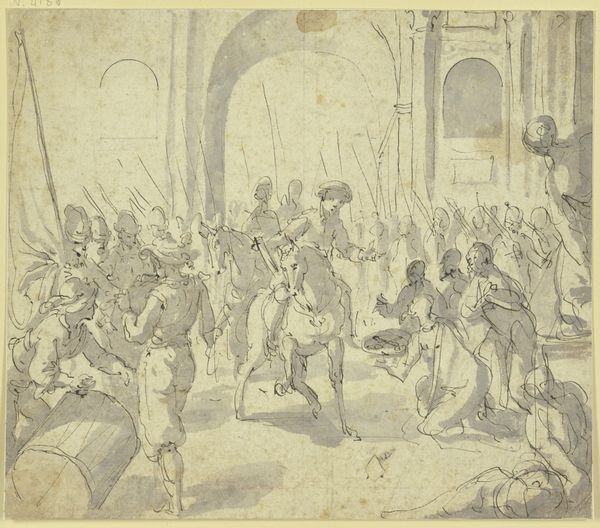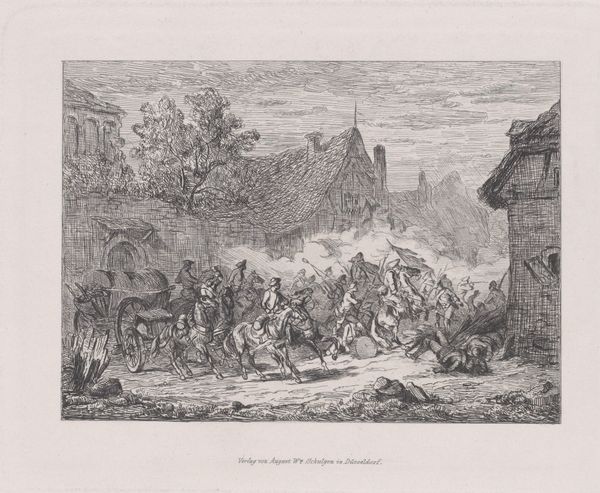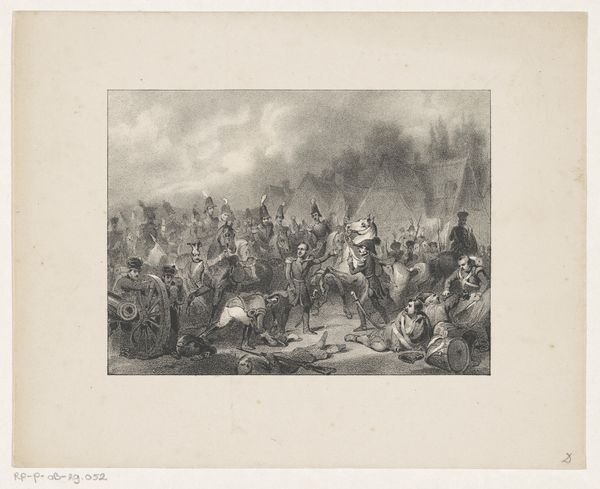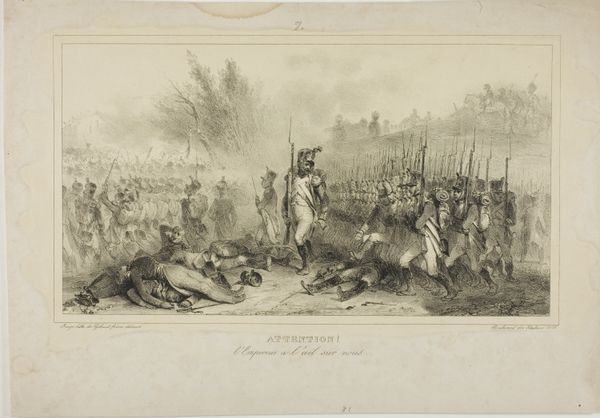
The Storming of the Bastille on 14 July 1789 (Prise de la Bastille le 14 juillet 1789) 1788 - 1798
0:00
0:00
drawing, print, etching, engraving
#
drawing
#
neoclacissism
#
narrative-art
# print
#
etching
#
figuration
#
soldier
#
cityscape
#
history-painting
#
engraving
Dimensions: sheet: 16 15/16 x 24 1/16 in. (43.1 x 61.1 cm) image: 14 11/16 x 22 15/16 in. (37.3 x 58.2 cm)
Copyright: Public Domain
Curator: Looking at this, it feels almost like a fever dream rendered in meticulous detail. An event of chaos, etched into order. Editor: That's a beautiful way to put it. And a fitting description for "The Storming of the Bastille on 14 July 1789" by Charles Thévenin. Made between 1788 and 1798, this print captures a pivotal moment in the French Revolution. Curator: Pivotal, indeed. Look at the imagery here. The Bastille itself looming in the background – a symbol of oppression. Then this cloud of smoke enveloping the figures; chaos embodied and the start of the revolt against monarchy! Editor: I keep getting drawn to the fallen figures at the forefront. Their bodies are so… classical. I think I spot that Neoclassical influence you’ve mentioned on previous artworks, too! Curator: Exactly. Even amid revolutionary fervor, Thévenin embeds a deliberate visual reference to ancient Greek and Roman sculptures, creating an immediate lineage to liberty and popular revolt. This emphasizes that idea of a cultural heritage being reclaimed, as a visual motif; a concept as potent as a weapon, I would add. Editor: Do you think so? To me, it speaks of art imitating history, then history imitating art! People wanted to *be* those Greek heroes. So they fought like them and died like them! Even at that precise moment of carnage. Curator: It's possible! These symbols held significant weight then as they still do now. It seems a bit circular, though. Either way, seeing how Thévenin portrays the city versus the rioters does it for me! The Bastille feels almost flat, whereas the figures are bulging out of the etching. He prioritizes humanity, chaos, life, but I think there may be a contrast there on purpose to distinguish between these values against lifeless, industrial imprisonment! Editor: Well, whatever he intended, I feel I’m starting to understand this revolution from a fresh angle; through the grit, the violence and even those idealized figures… and it still leaves me a bit breathless. Curator: A lot of the psychology from then can even carry on into now... Makes you think, huh?
Comments
No comments
Be the first to comment and join the conversation on the ultimate creative platform.

